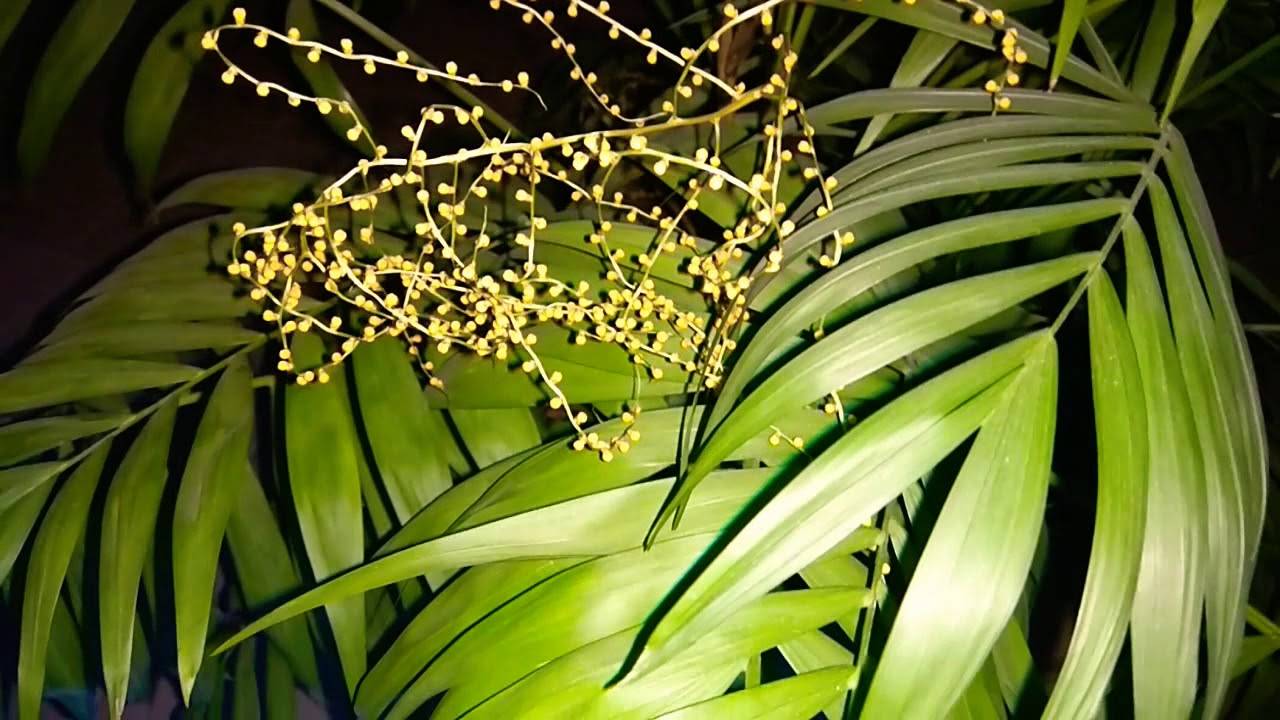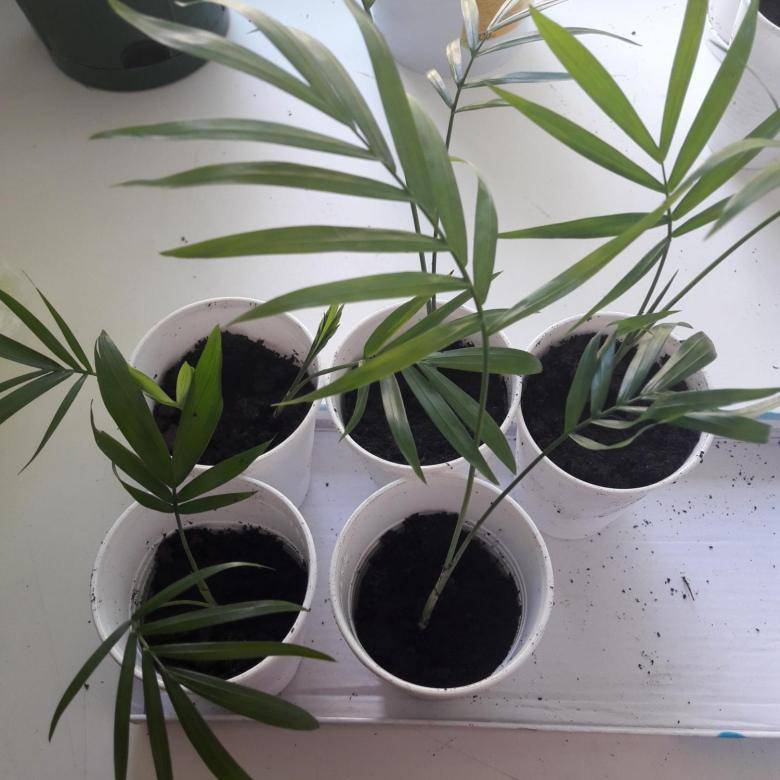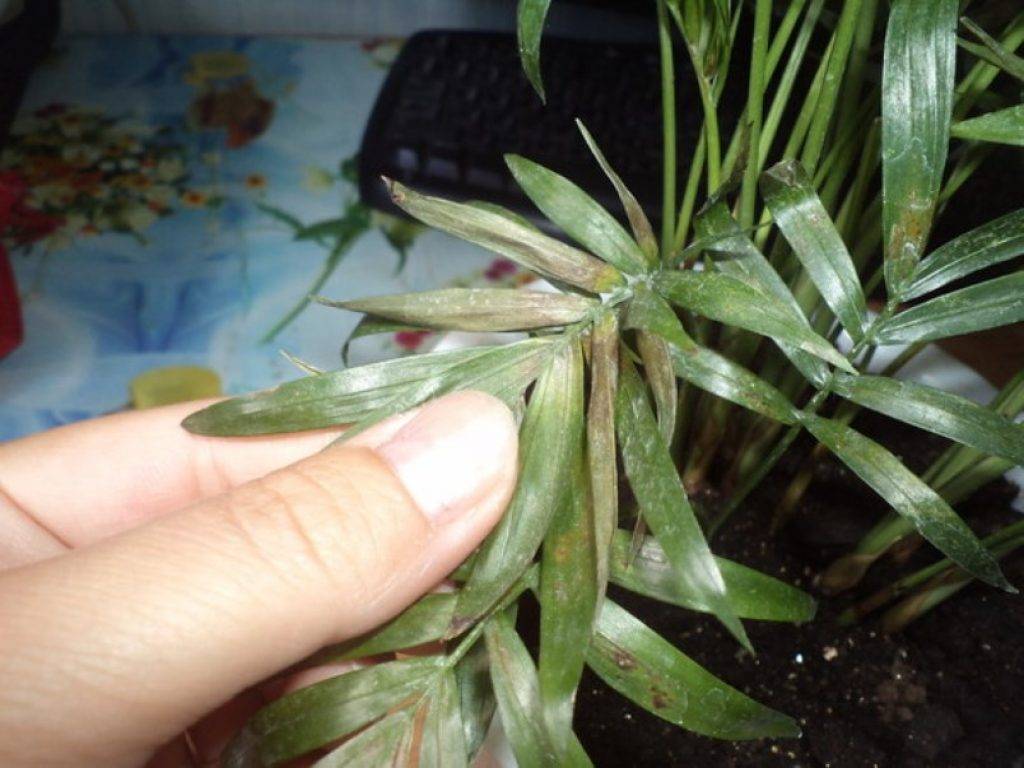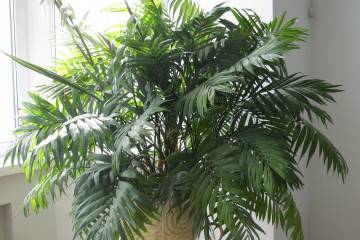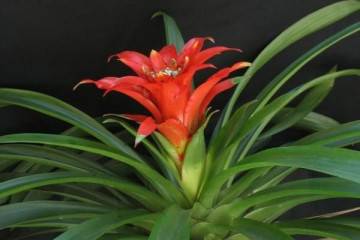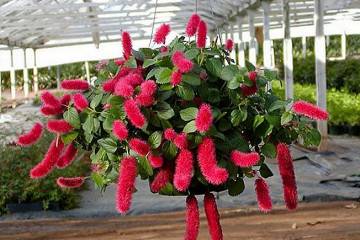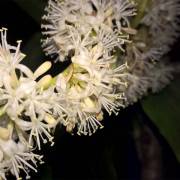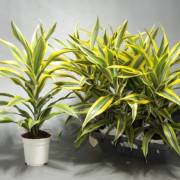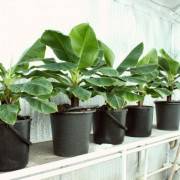Chamedorea flower - home care
Content:
Home palm trees are original and fresh plants that decorate the room and purify the air. One of these trees, widely used in interior decoration, is hamedorea. The plant culture is characterized by good immunity and fast growth. To learn how to care for chamedorea at home, you need to familiarize yourself with the features of the plant.
What hamedorea looks like
Chamedorea palm is a plant that belongs to the Palm family. It grows mainly in the forest zones of South America. Chamaedorea has another name - mountain palm. The plant is both in the form of a tree and in the form of a shrub. Maximum height 5 m.
Common varieties
The most common crop varieties include:
- hamedreya is graceful. A tree up to 2 m high with yellow inflorescences;
- hamedorea Bridble. A small shrub, reaching a height of 1.5 m. As part of home care, Bridble chamedorea requires regular feeding, watering and pruning;
- chamedorea is high. Strong tree, reaching a height of 4 m;
- cascading chamedorea. A plant with numerous stems and small thin leaves. Height up to 3 m.
Healing properties
It is recommended to plant palm trees in living rooms. They help cleanse the air from germs and bacteria, thereby preventing the development of many pathologies.
History of appearance
The plant first appeared in Central and South America and was used for food instead of vegetables. Over time, palm trees began to be used to ennoble the territory and purify the air in the house.
Hamedorea: home care
In order for the plant to bloom and not get sick, you need to follow the rules of care, which were compiled by experienced gardeners.
Temperature
The shrub loves a warm and humid climate, therefore it is recommended to grow it at temperatures from 15 ° C to 30 ° C. At lower rates, the palm tree may slow down its growth.
Lighting
The plant prefers rooms with good lighting. However, experts advise against displaying the tree in southern rooms with large windows. The best option is the western part of the house. At the same time, direct sunlight should not fall on the leaves and inflorescences.
Watering
The chamedorea flower loves moist soil, but over-watering can lead to rot and death of the root system. Abundant irrigation is recommended in spring and summer. The process uses clean water at room temperature. In autumn, the number of procedures should be reduced by 2 times.
Spraying
In the autumn, before wintering, gardeners recommend preventive spraying, which will help prevent the appearance of pests and many diseases. For the procedure, fungicides and organic solutions are used. Watering is performed a day after treatment.
Humidity
For good growth, chamedorea needs proper care and high soil moisture. Otherwise, dryness of the leaves, the death of the root system, the appearance of pests on the branches can be observed. In summer and spring, palm trees need to be sprayed, and in winter, containers with water should be placed near them, which should be poured every week.
Priming
The plant culture prefers fertilized soil. For this, organic matter is used: humus, peat. Experienced gardeners recommend sterilizing the soil before planting. To do this, they are laid out for several hours in a freezer, and then distributed in pots.
Top dressing
Like many plants, chamedorea needs regular fertilization from March to mid-November. In winter, the number of procedures can be reduced. In the spring, it is necessary to use mineral fertilizers, in the fall, it is worth using organic substances.
Features of winter care during the dormant period of hamedorea
In winter, palms do not require special care; at this time, you need to provide them with the most comfortable temperature and soil moisture. Before the start of the season, preventive pruning and spraying is carried out, the soil is abundantly moistened and fertilized. Further, all procedures are carried out at intervals of 2-3 weeks.
When and how it blooms
The flowering of chamedorea begins only 4-6 years after planting. Further, the appearance of inflorescences is observed every 1-2 years.
- Types of flowers. Inflorescences are distinguished by a monochromatic orange or yellow color. During the flowering period, a pleasant and delicate aroma emanates from the palm tree.
- Flower shapes. The inflorescences form into small panicles, which in their appearance resemble beads on a branch.
- Flowering period. The plant begins to bloom in the spring and summer months. The dormant period begins in October.
- Changes in care during flowering. During the growing season, it is necessary to carry out regular feeding and watering. Gardeners advise preventive pruning, during which you need to remove dried branches. This will help to avoid obstructing the emergence of new flowers.
Pruning
A thorough inspection and pruning of the plant should be carried out annually. In the process, it is recommended to remove dried leaves that have a yellow tint and irregular shape. For the procedure, you must use sharp scissors or pruning shears. After pruning, the stems are treated with a fungicide.
How hamedorea reproduces
There are several ways to propagate a palm tree: seed germination, cuttings, air layers.
Germinating seeds
To reproduce hamedorea by this method, you must:
- Purchase seeds.
- Put them in water, keep them for a week to germinate.
- Remove the upper shell from them with sandpaper.
- Plant the seeds in small cups with fertilized soil and leave until spring.
Rooting cuttings
For reproduction you will need:
- In the autumn, carefully examine the palm tree.
- Carry out preventive spraying.
- Choose strong and young cuttings, cut them off.
- Put the shoots in water for several days, then plant them in soil fertilized with peat and send them to the basement or cellar.
In early spring, the plant can be planted in standard pots.
Air layering
To propagate a palm tree in this way, you need:
- Examine the flower, choose a straight and unbranched branch.
- Cut the bark on it along the ring.
- Put a plastic bag on the branch, fix it from below with electrical tape.
- Pour the fertilized soil into the bag, water it.
- Top dressing and watering until March.
In early March, you will need to cut off the selected branch and transplant it into a separate pot.
Transfer
As it grows, the palm should be transplanted into a larger pot. The frequency of the procedure is once every 2-3 years. Adult plants are transplanted every 5 years. The procedure is carried out as follows:
- Prepare a larger pot.
- Pour expanded clay and a little soil into it.
- Place the palm tree in the center, sprinkle the root system with gentle movements, tamp the soil.
- Water the plant after transplanting.
Next, the hamedorea should be given a few days of rest.
Possible growing problems and diseases
This palm tree is distinguished by a fairly persistent immunity, however, if untimely fertilizing and watering, diseases and pests can affect them.
Drops buds and leaves
If a palm tree sheds its leaves, this indicates the wrong choice of place for the plant, as well as a low temperature in the room. To eliminate the problem, you need to transfer the pot to a well-lit room, where the temperature varies from 15 ° C to 30 ° C.
Leaves can also be discarded in the event of over-watering. In such cases, you need to let the earth dry out, and then restart the procedure again.
Leaves turn pale
Pallor on the leaves is a sign of mite infestation. Most often, parasites appear on branches in the spring and summer. To solve the problem, it is recommended to carry out spring spraying with fungicides.
The tips of the leaves dry
Excessive dryness is a sign of rare watering and a deficiency of mineral components. To eliminate the problem, you will need to loosen the soil, fertilize with minerals, and water the soil abundantly. To prevent dryness from reappearing, the pot can be moved to a sunnier room at home.
The lower leaves fall away
The situation indicates excessive soil moisture and a large amount of fertilizers in the soil. In this case, it is recommended to cut off the spoiled leaves, loosen the soil and leave the palm tree alone for several days until the liquid is completely absorbed into the soil.
Pests
Pests appear on stems and leaves during the period of active flowering - in spring and summer. This is due to excessive moisture and the lack of preventive treatment. Pests are removed with fungicides and mineral solutions.
Other problems
Additional problems are noted:
- the appearance of moldy fragments on the leaves;
- dry soil;
- falling of inflorescences;
To prevent the development of pathologies, you need to monitor the level of soil moisture, the frequency of top dressing and timely pruning.
Hamedorea is a beautiful and graceful plant that is used to beautify the home. In order for a culture to grow productively, it is necessary to provide it with proper care, timely transplantation and pruning.


